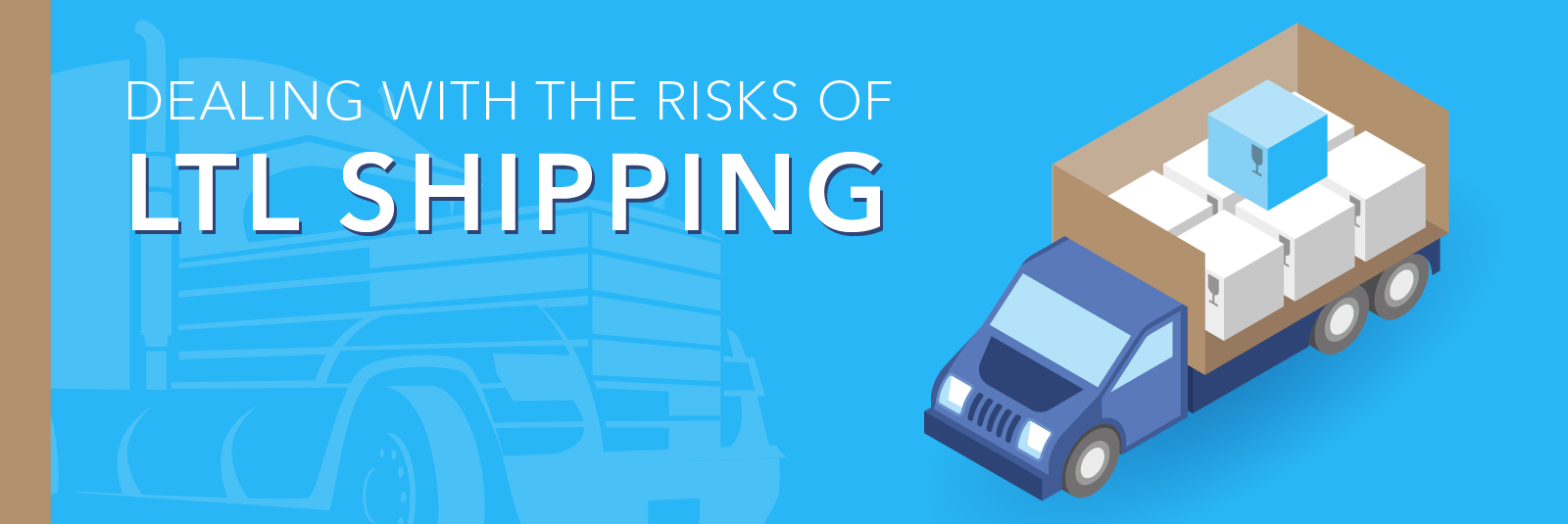Less than truckload (LTL) shipping is when multiple shippers share space on the same truck or trailer because they’re transporting small shipments. This differs from dedicated truckload shipping, in which one shipper’s cargo fills the entire truck.
With a dedicated truckload, the freight is all going to the same place. However, an LTL transport typically makes multiple stops because the various shipments have different final destinations. Frequent stops mean frequent loading and unloading of the freight, which can increase the risk of damage to your shipment.
To help protect your LTL shipments, check out these seven tips when preparing your freight.
- Utilize Labels
Take inventory of your shipment and clearly label everything for organizational purposes. Having a clear record of what you’re shipping will also be essential in the case of lost or damaged goods.
When labeling your shipments, remove any old labels, and place your new labels on the side flaps of the boxes toward the top. Make sure the labels are easily identifiable and legible, include any special care instructions, and identify fragile items on the freight, such as flammable, liquid, or heavy. Also, note the shipment’s weight, final address, and any other information that might help the shippers.
- Choose the Right Packing Materials
Taking advantage of packing materials can make a huge difference when it comes to preventing damage. For instance, stretch wrap goes around your entire shipment and the palette, keeping the contents in place so they don’t shift around. Anti-slip mats are another helpful packing material. These mats increase load stability by creating friction between the load and the load-bearing surface.
Other materials to consider using include pallet bands, edge protectors, and internal packaging like bubble wrap, paper honeycomb, and foam.
- Take Extra Care When Packaging
Take the extra time to correctly package your shipment before sending it off with an LTL carrier. Try to make your shipment as compact as possible. You also want to make sure it’s packaged in the correct material for the type of freight being transported and that everything is sealed correctly to avoid damages from potential vibrations, shocks, or unexpected conditions in transport – such as moisture or high temperatures. For instance, heavy-duty tape can lose its adhesive when exposed to fluctuating temperatures, so you may want to use shrink wrap to help keep everything sealed.
- Select the Correct Pallet
Depending on the dimensions and weight of your load, you’ll want to choose a pallet accordingly. One essential consideration is that your pallet can be easily lifted by forks from two directions. After reviewing the dimensions and weight of your shipment, choose from various sized wooden, plastic, or even metal pallets for heavy-duty shipments.
- Stack Your Pallets
If items aren’t correctly placed on top of one another, they could topple over during transit. As your freight will be moved around by multiple carriers, you will want to make sure your pallets are correctly oriented.
Ideally, you want to stack all your boxes on top of one another in the same direction, with edges aligning rather than overlapping or hanging over the side of the freight. You never want your shipment hanging over the edge of the pallet. Placing a layer of cardboard above and below your shipment on the pallet can further help stabilize undistributed weight.
- Prepare for Handling
Knowing that your shipment can be handled numerous times by drivers who are unfamiliar with its contents, take some time to think about the level of difficulty required to transport your freight. If the items should not be stacked, clearly label the package that it is not to be stacked. If your goods can be stacked, realize that other items might go on top of your shipment, meaning you need to determine whether your goods can tolerate extra weight from unknown freight on top of them.
- Proper Insurance Coverage
Accidents can still occur even when you’re prepared. Always be aware of the ins and outs of the carrier’s liability for LTL shipments and understand that you may need additional insurance coverage. While coverage may vary based on specific contracts in place, LTL carriers typically limit their liability based on the weight of the shipment according to their rules tariff or bill of lading.
For example, the carrier may only be liable for $5/lb. If your shipment is 500 pounds, then the carrier is only on the hook for $1,000. Many shippers will declare excess value to the carrier, but this does not mean you are fully insured. It simply means you have raised the level of liability. Keep in mind carriers still have extensive exclusions and defenses in place, and you must also prove carrier negligence. Because of this, it’s important to understand all the terms of your insurance policy.
All-Risk Insurance is a smart alternative to ensure your shipment is truly covered for its full value. This is the broadest form of coverage and will pay out regardless of carrier negligence. As with any shipment, purchasing the correct insurance policy will help to protect your goods and reduce your risk should damage occur. Contact us today for more information on insurance coverage.
